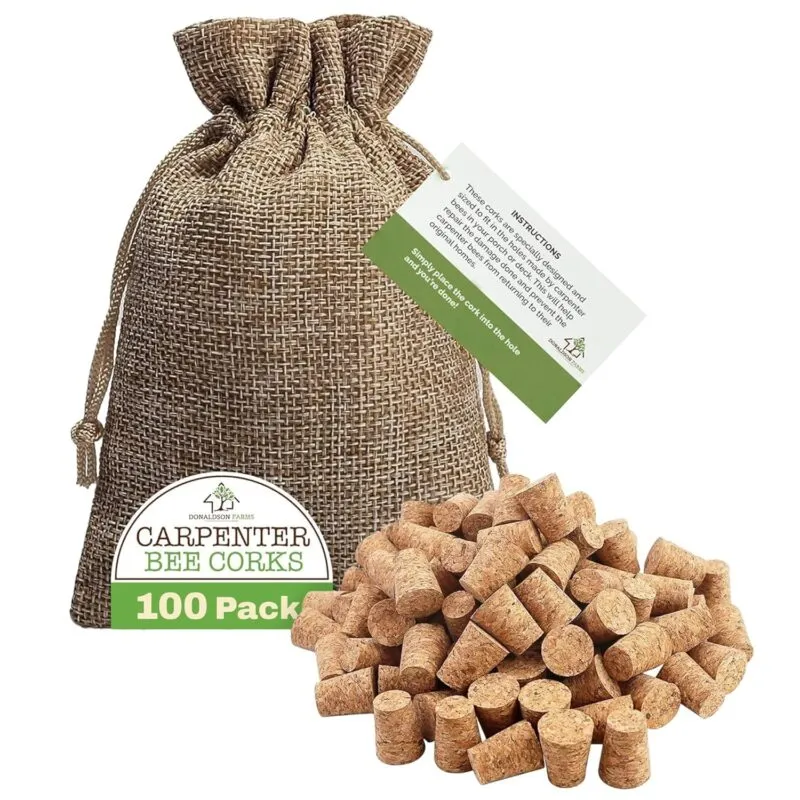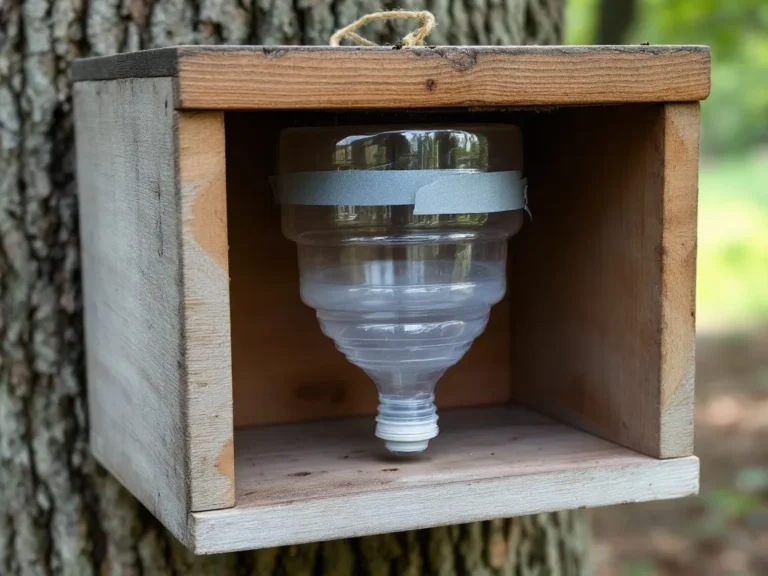The Silent Destruction of Carpenter Bees
Imagine walking outside on a sunny afternoon, only to notice small, round holes in the wooden fascia of your home. At first, these holes may seem harmless, but upon closer inspection, you discover that they are entrances to tunnels bored by carpenter bees. While the bees themselves aren’t aggressive, the damage they cause can compromise the structural integrity of your wood over time.
Carpenter bees drill into wood to lay their eggs, creating tunnels that can weaken beams, posts, and other wooden elements of your property. Without intervention, these bees can return year after year, expanding their tunnels and causing further damage. One of the most effective ways to prevent this recurring problem is by using carpenter bee hole plugs.
Understanding Carpenter Bees and the Damage They Cause
Before diving into the specifics of carpenter bee hole plugs, it’s crucial to understand the behavior and impact of carpenter bees. Unlike termites, which eat wood, carpenter bees carve out tunnels to create nesting sites. These bees typically target untreated or unpainted wood, including fascia boards, eaves, decks, and wooden siding.
Each female bee excavates a perfectly round hole, usually about half an inch in diameter, leading into a tunnel that can extend several inches into the wood. Over time, these tunnels can intersect with those of other bees, leading to a network of channels that weaken the structure. In addition to the physical damage, these tunnels can invite moisture, leading to wood rot, and can attract woodpeckers, who seek out the larvae inside, causing even more damage.
What Are Carpenter Bee Hole Plugs?
Carpenter bee hole plugs or wooden corks are specialized tools designed to seal the entrance holes created by carpenter bees, preventing them from re-entering and continuing to excavate the wood. These plugs are typically made from durable materials like cork, wood, or plastic, which can withstand weathering and environmental stress.
The primary purpose of these plugs is to block the holes after the bees have left, ensuring that they cannot return to expand their tunnels. Additionally, by filling these holes, you prevent other pests from taking up residence in the abandoned tunnels, further protecting your wood.
Why Use plugs for carpenter bee holes?
There are several compelling reasons to use carpenter bee corks :
- Prevention of Further Damage: By sealing the holes, you stop carpenter bees from re-entering and expanding their tunnels, preventing additional damage.
- Protecting Wood from Rot: Open holes can allow water to seep into the wood, leading to rot. Hole plugs prevent moisture from entering, helping to preserve the wood’s integrity.
- Aesthetic Improvement: Carpenter bee holes can be unsightly, especially on visible parts of your home. Filling these holes with plugs restores the appearance of the wood and prepares it for painting or staining.
- Blocking Other Pests: Unfilled holes can become entry points for other pests, such as ants or beetles. Plugs close off these potential pathways, keeping your wood safe from further infestations.
How to Use Carpenter Bee Hole Plugs
Using carpenter bee wooden corks is a straightforward process, but it requires attention to detail to ensure effectiveness. Here’s a step-by-step guide:
- Inspect the Area: Before sealing the holes, make sure the carpenter bees have left the nest. This usually happens in late summer or early fall after the larvae have matured and the bees have vacated.
- Clean the Holes: Use a small brush or a can of compressed air to clean out any debris, sawdust, or remnants of bee activity from the holes.
- Apply Insecticidal Dust (Optional): If you’re concerned about bees returning to the area, you can apply a small amount of insecticidal dust into the hole before plugging it. This will deter any bees that might try to re-enter.
- Insert the Plug: Gently tap the plug into the hole until it is flush with the wood surface. If necessary, use wood glue or an adhesive to secure the plug in place.
- Finish the Surface: After plugging the holes, you can sand the area smooth and apply paint, stain, or varnish to match the surrounding wood. This step not only improves the appearance but also adds an extra layer of protection against future infestations.
Choosing the Right carpenter bee corks
Not all wooden corks are created equal, and selecting the right type for your needs is essential for effective protection. Here are some factors to consider :
- Material: Hole plugs come in various materials, including cork, wood, and plastic. Cork plugs are flexible and easy to insert, while wood plugs blend seamlessly with wooden structures. Plastic plugs are durable and weather-resistant but may not be as aesthetically pleasing.
- Size: Ensure that the plugs you choose are the correct diameter for the holes. Carpenter bee holes are typically about half an inch in diameter, but measuring the holes before purchasing plugs is essential.
- Durability: Look for plugs that can withstand outdoor conditions, especially if they will be exposed to the elements. Weather-resistant materials are crucial for long-lasting protection.
- Ease of Use: Consider how easy it is to insert and secure the plugs. Some may require adhesive or additional tools, while others are designed for a simple press-fit installation.
FAQs
- What are carpenter bee hole plugs made of?
- Carpenter bee hole plugs can be made from cork, wood, or plastic, each offering different benefits in terms of flexibility, durability, and appearance.
- How long do carpenter bee hole plugs last?
- The longevity of hole plugs depends on the material and environmental conditions. Generally, wood and plastic plugs can last several years, while cork plugs may need to be replaced more frequently.
- Can I use hole plugs on painted or varnished wood?
- Yes, hole plugs can be used on painted or varnished wood. After plugging the holes, you can repaint or re-varnish the area to blend the plugs with the surrounding wood.
- Will carpenter bee hole plugs prevent bees from returning?
- Yes, when used correctly, hole plugs prevent carpenter bees from re-entering their old nests, reducing the likelihood of recurring infestations.
- How much do carpenter bee hole plugs cost?
- The cost of carpenter bee hole plugs varies depending on the material and quantity. A pack of 10-20 plugs typically ranges from $5 to $20.
Conclusion
Carpenter bee hole plugs are a simple yet effective solution for protecting your wood structures from the ongoing damage caused by these industrious insects. By sealing the holes they create, you not only prevent further destruction but also protect your property from other pests and moisture-related issues. Whether you’re a seasoned DIY enthusiast or new to home maintenance, using carpenter bee hole plugs is an essential step in safeguarding your home.





